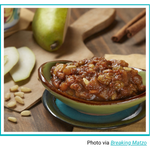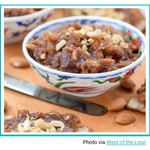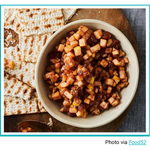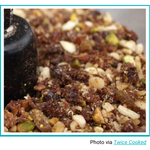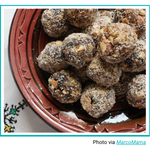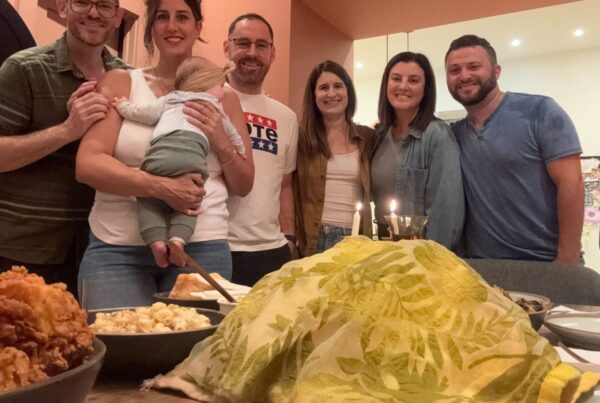Charoset Around the World
On the first day of Passover each year, Jews around the world celebrate with a feast known as a Seder. One of the most symbolic items on the seder plate is charoset (kharóset). This mixture of fruits, nuts, and spices represents the mortar and clay that the enslaved Israelites used while building. Charoset is one of many ways in which hard work, difficulty, and the challenges of slavery are represented during the Passover Seder.
The preparation of charoset has evolved as the Jewish diaspora spread across the globe, making this Passover favorite a great reflection of the diversity of the Jewish community. Depending on where you are in the world, you might find ingredient combinations such as apples and walnuts, dates and pine nuts, or pears and pistachios.
As you think about celebrating Passover with your HMI family, here are some ideas on how to incorporate new and diverse charoset recipes into your celebration:
- Reimagine the seder ritual by hosting a charoset tasting that features different recipes – consider including maror (bitter herbs) and matzah (unleavened bread) for guests, too!
- Include a new charoset on your Seder table instead of, or in addition to, your traditional charoset recipe.
- Invite guests to each bring a new charoset to your Passover celebration.
Use HMI’s Charosets Around the World recipe cards to bring something new to your Passover celebration!
Italian Charoset: The history of Jews in Italy spans over 2,000 years and the charoset, like most Italian cuisine, can vary based on the region. Charoset in the north of Italy reflect the flavors and crops found in the Alps while southern Italian charosets include flavors and fruits that can be found in warmer climates.
Sephardic Charoset: Sephardic Jews are a Jewish population who have historically descended from the Iberian Peninsula. Jews in this area have their own nearly extinct language and music called “Ladino” which is a combination of Castilian Spanish and Hebrew. In Sephardic charoset, you’ll find items native to the Iberian Peninsula such as figs, pears, and pistachios.
Ashkenazi Charoset: Ashkenazi Jews typically refer to those with ancestral ties to Central and Eastern Europe. Ashkenazi Jews have traditionally spoken Yiddish, which is now a dying language and is a combination of Hebrew, German, Aramaic, and Slavic. This style of charoset might be the most familiar to you if you live in the U.S., since more than 90% of American Jews are of Ashkenazi descent.
Persian Charoset: Mizrahi Jews come from Middle Eastern and African ancestry, including Persia (roughly present-day Iran), where a Jewish community has existed since the Biblical period. Although many have left due to persecution and political turmoil, there is still a small Jewish community in Iran. Today, the largest Persian Jewish population lives in Los Angeles. Sarah Gipoor, HMI’s West Coast Director, loves adding pomegranate molasses to her charoset when celebrating with her family.
Moroccan Charoset: Also known as Maghbrebi Jews, Moroccan Jews have been in the area for millenia. This Moroccan-style charoset is served truffle-style, rolled in cinnamon. At the end of Passover, Moroccan Jews also celebrate “Mimouna,” to mark the return to eating hametz (leavened bread). During Mimouna, it is a mitzvah (commandment) to welcome guests to your home. Friends and family join together to celebrate and feast on holiday favorites.


